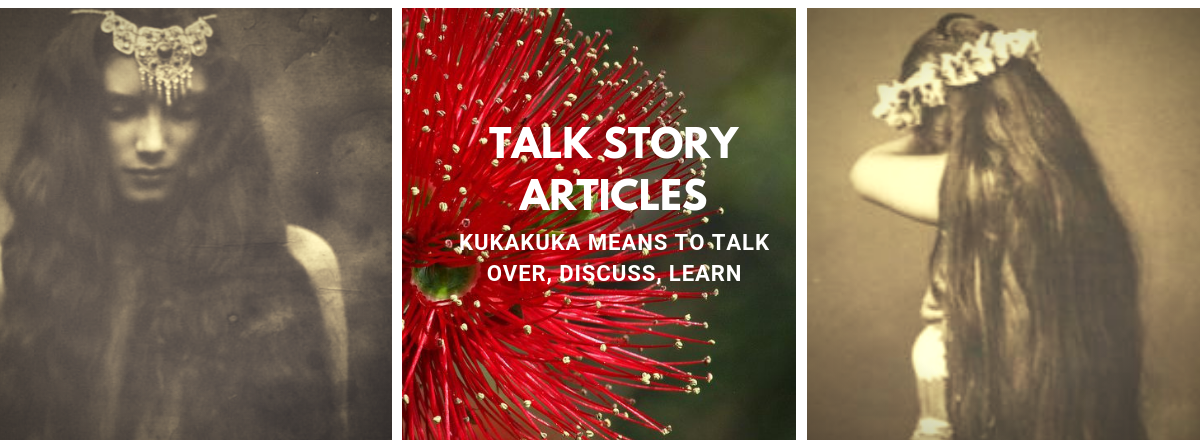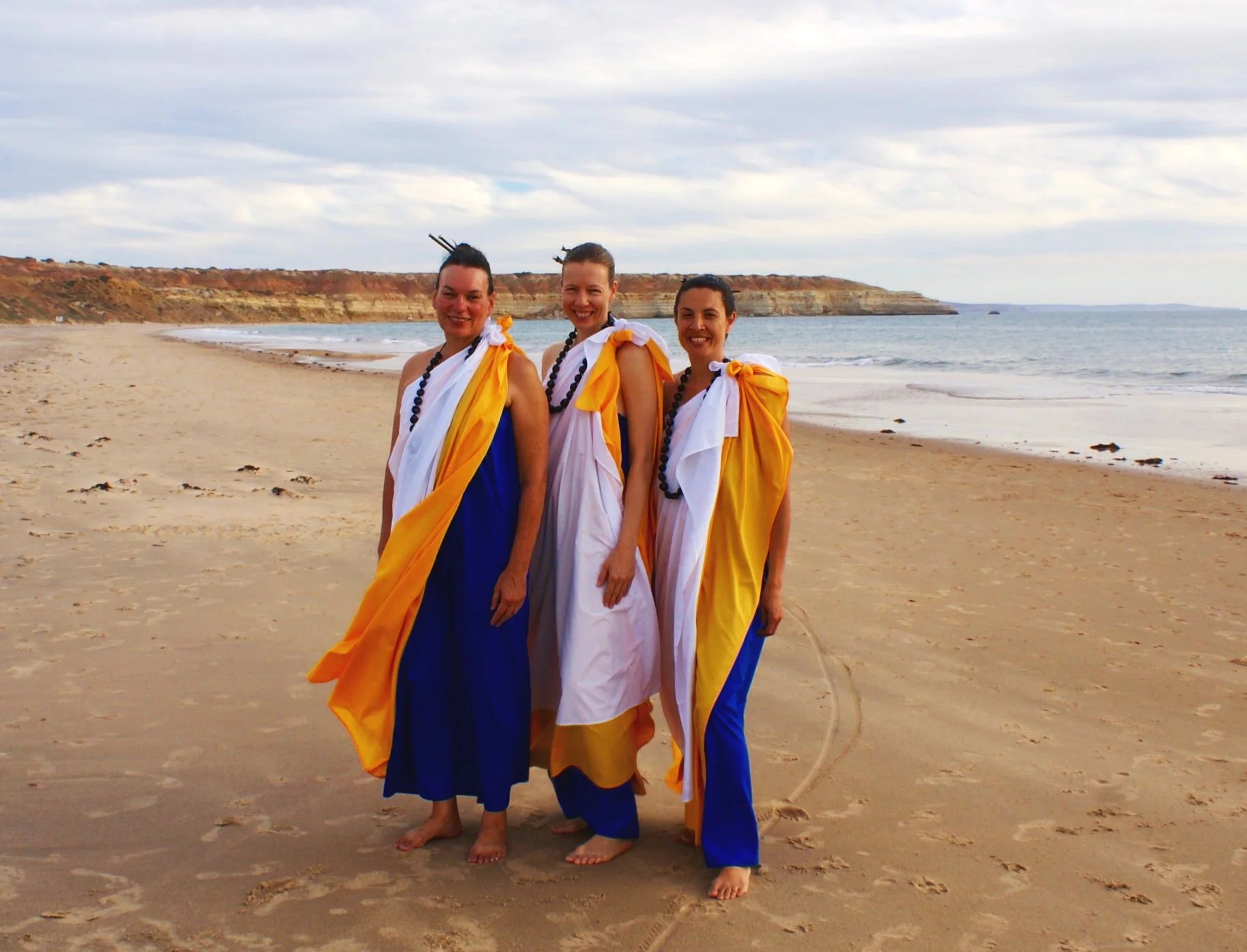Hawaiian Massage: Myths about Lomilomi, Kahuna, Lomilomi Nui and more
/Most blogs and articles only tell part of the story. The motivation is to persuade you to book a session with the Therapist, or position the Writer as the “go to Expert”, or join a course.
This article is different. The aim is to help you better understand Hawaiian Healing, specifically in this case, Hawaiian Lomilomi Bodywork Massage.
You may have noticed my title KUMU PA’A Julia Nālani. In the Hawaiian Language, one word may have multiple layers of meaning depending on how it is used.
A KUMU is generally referred to as a Teacher - might be in Primary School, University or other educational setting. When itʻs used in a Cultural sense, it points out a specific area and level of expertise. Which is why it is followed by whatever the Kumu is considered the Expert in - Kumu Hula, if they teach dance, Kumu Waʻa if they teach canoe or boat building. Kumu Paʻa is reserved for those who are Teachers of the Foundation.
That in itself is a huge topic because the understanding of the importance of Foundation is central to how Hawaiians see the world and their place in it. A Kumu is considered the Source - the Source of information. The title is awarded and recognises the depth of Cultural Knowledge a Kumu has earned through years and years of study with their Kumu. You canʻt appoint yourself as a Kumu.
A Kumu of this level, goes through a special recognition Ceremony during which their Title is bestowed…so Iʻm sharing this information from my position as a Lineage Kumu:
Hawaiian Bodywork, which non-Hawaiians call “massage”, is ʻohana-based. That means it was originally done in families in a specific region, called Ahupuaʻa. You may live in the next Ahuapaʻa and be from a different family - which means you might do Bodywork using a different method.
So what is done in one “suburb” might not be the same in another just down the road. You with me? Thatʻs why we donʻt say THIS is Lomilomi and THAT isnʻt.
However, some have been better preserved than others. Because of the impact of the Missionaries and Colonisation, many forms of Lomilomi have been lost forever.
Lomilomi is a generic term which describes one aspect of what the Practitioner is doing - the FORM. Within the Form, is what we call the ESSENCE. It is the Essence that is important because, as you learned just now, the Form may differ between ʻohana/families.
The Essence is where the Mana/the Spirit Power of our Ancestors is; itʻs where all the Spiritual Teachings that inform the Practice of Lomilomi come together; itʻs Essence that gives to and continues the “tradition”. It is Essence that we connect to and become part of when weʻre doing the Practice. Both Form and Essence are the Practice.
Names were not given by the ʻohana/family to their method of Lomilomi. Naming is a “western” or non-Hawaiian perspective to distinguish a particular way of doing Lomilomi - and it ignores a very specifc Traditional Teaching. When something was named, the naming was done with careful awareness about the understanding of what that name, the words, and the process of naming meant culturally.
As Lomilomi became more popular in the 1960ʻs - 1980ʻs, some Hawaiian Teachers did name their specifc practice, but again, this is a more about the enquiries from Western Students and their need for something to be named and clarified.
Hawaiian Haumāna/Students didnʻt have this need, they understood and accepted the method as simply “Lomilomi”. They understood that one method is not superior to another, and to suggest that it might be is simply not Hawaiian Thinking.
Thatʻs why we would never call Lomilomi Bodywork, Kahuna. A Kahuna is revered in Hawaiian Culture. Like a Kumu, they are Masters of the knowledge and wisdom they hold. To name a form of Hawaiian Bodywork as Kahuna, is not only culturally inappropriate, itʻs offensive. And it suggests you are calling yourself a Kahuna…
And whilst there are variations of that name in Australia, really, regardless of how you spell it, itʻs largely all about branding, and the schools that teach it have done a very good job at branding and marketing…but at the end of the day, itʻs still not Hawaiian Bodywork and never will be.
Thatʻs why itʻs important to take the time to read website information carefully. If something says “based on”, “drawn from”, “inspired by” and so on, thereʻs a pretty safe bet itʻs not a Hawaiian Practice.
Same if you read that the Teacher (or Practitioner) has drawn from their own cultural background and included elements from it in the Practice.
Which is also the case with Lomilomi Nui. The “flying” included in that Practice isnʻt Hawaiian and it isnʻt drawn from Hula/Hawaiian Dance. It is European and comes from European Folk Dancing. It is the same with 7 Principles of Huna - these arenʻt Hawaiian either, because HUNA is not Hawaiian. Again, thatʻs another Traditional Teaching for another day, but you can see how all these elements have inter-related layers and layers of connections.
And you can see how they are being distorted by non-Hawaiians who do not know the Culture and havenʻt bothered to learn it in depth. It takes years of study and immersion.
When it is changed, because of the times we live in and the pervasiveness of the Internet, Lomilomi is changed forever. And we fear, lost…
What this loss means is the Mana/the Spirit Power of the Ancestors is watered down, or not in place, in the way Lomilomi is being taught and practiced. Because PLACE - the Place of Origin, is where the MANA is drawn from.
This is a fundamental Teaching and brings us full circle back to the ʻohana. Because in Hawaiian Thinking, PLACE and ʻOHANA are inseparable.
So where does that leave you? It leaves you with the understanding:
one method of Hawaiian Bodywork is not superior to another
words like “based on”, “inspired by”, “drawn from” are good indicators that the method is not essentially Hawaiian
the Form of bodywork is important, but it is Essence that holds the Mana
website words hold clues as to how authentic a method is
the Practice of Lomilomi is at risk of being lost by distortions
you need to be discerning and reflect on what it is you are looking for
As a Lineage Kumu, we have a Kuleana/responsibility. We will never support practices that cause harm to the Hawaiian people and the generations of children who will not know who they are. Lomilomi is part of who Hawaiian children are. It is a Hawaiian Practice. It belongs to the Hawaiian People and their future…Aloha.








